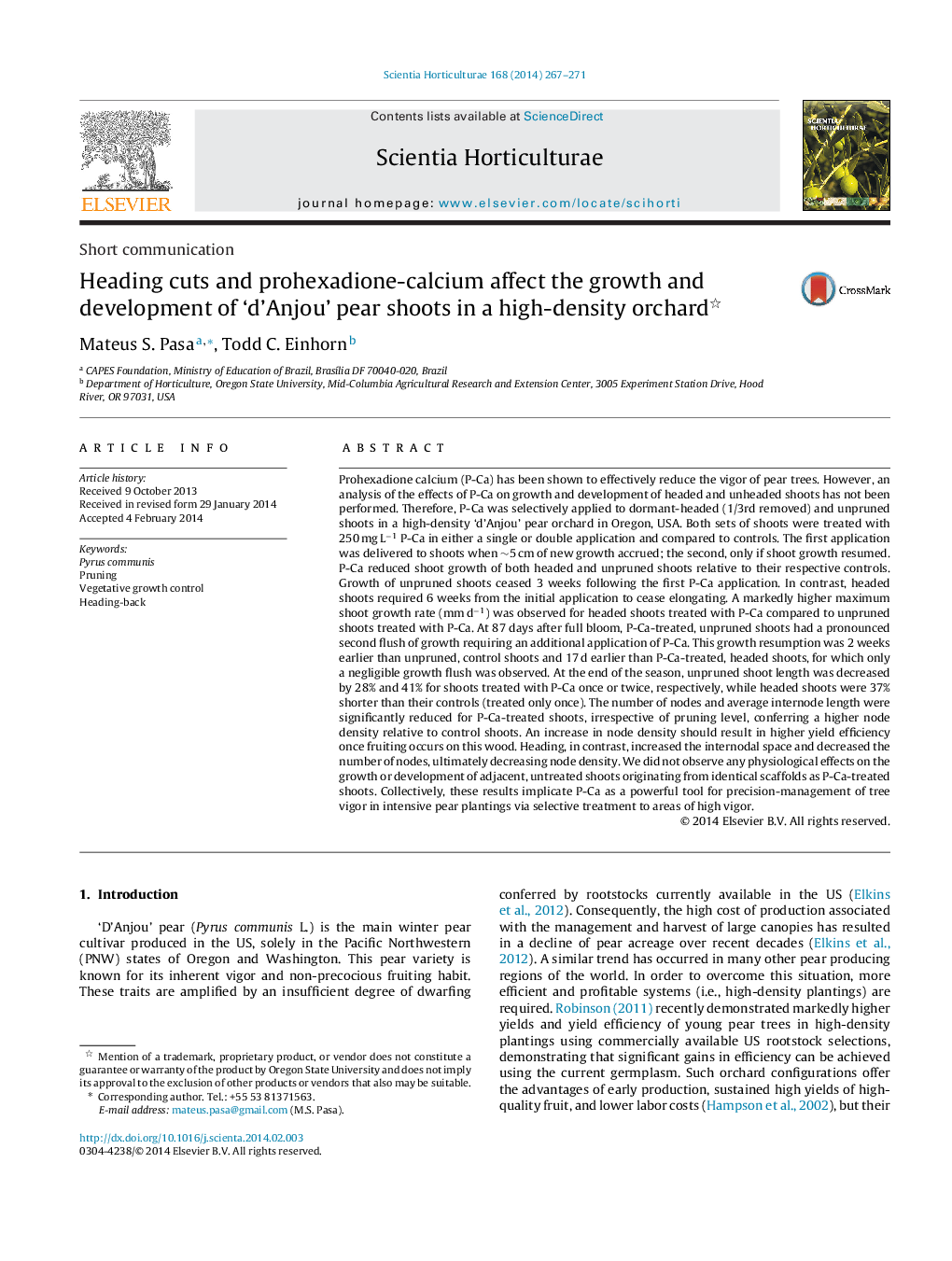| کد مقاله | کد نشریه | سال انتشار | مقاله انگلیسی | نسخه تمام متن |
|---|---|---|---|---|
| 4566920 | 1628830 | 2014 | 5 صفحه PDF | دانلود رایگان |
• Prohexadione-ca (P-Ca) reduced the shoot growth of vigorous ‘d’Anjou’ pear.
• Heading increased maximum daily growth rate and decreased node density of shoots.
• Only P-Ca-treated, unpruned shoots had a pronounced secondary growth flush.
• No apparent translocation of P-Ca occurred between treated and untreated branches.
• P-Ca can be used as a precision management tool to target areas of high vigor.
Prohexadione calcium (P-Ca) has been shown to effectively reduce the vigor of pear trees. However, an analysis of the effects of P-Ca on growth and development of headed and unheaded shoots has not been performed. Therefore, P-Ca was selectively applied to dormant-headed (1/3rd removed) and unpruned shoots in a high-density ‘d’Anjou’ pear orchard in Oregon, USA. Both sets of shoots were treated with 250 mg L−1 P-Ca in either a single or double application and compared to controls. The first application was delivered to shoots when ∼5 cm of new growth accrued; the second, only if shoot growth resumed. P-Ca reduced shoot growth of both headed and unpruned shoots relative to their respective controls. Growth of unpruned shoots ceased 3 weeks following the first P-Ca application. In contrast, headed shoots required 6 weeks from the initial application to cease elongating. A markedly higher maximum shoot growth rate (mm d−1) was observed for headed shoots treated with P-Ca compared to unpruned shoots treated with P-Ca. At 87 days after full bloom, P-Ca-treated, unpruned shoots had a pronounced second flush of growth requiring an additional application of P-Ca. This growth resumption was 2 weeks earlier than unpruned, control shoots and 17 d earlier than P-Ca-treated, headed shoots, for which only a negligible growth flush was observed. At the end of the season, unpruned shoot length was decreased by 28% and 41% for shoots treated with P-Ca once or twice, respectively, while headed shoots were 37% shorter than their controls (treated only once). The number of nodes and average internode length were significantly reduced for P-Ca-treated shoots, irrespective of pruning level, conferring a higher node density relative to control shoots. An increase in node density should result in higher yield efficiency once fruiting occurs on this wood. Heading, in contrast, increased the internodal space and decreased the number of nodes, ultimately decreasing node density. We did not observe any physiological effects on the growth or development of adjacent, untreated shoots originating from identical scaffolds as P-Ca-treated shoots. Collectively, these results implicate P-Ca as a powerful tool for precision-management of tree vigor in intensive pear plantings via selective treatment to areas of high vigor.
Journal: Scientia Horticulturae - Volume 168, 26 March 2014, Pages 267–271
